- Home
- Kathy Reichs
Deadly Descisions Page 16
Deadly Descisions Read online
Page 16
Before I could ask, Dorsey slumped back again, an amused expression curling the corners of his mouth.
"Is there something funny you'd like to share?"
Dorsey ran a hand under his chin and the goatee curled around his fingers. He shifted the receiver to the other ear
"Tell pus butt to ease off my case.
I stood to leave, but his next words froze me in place.
"Work with me and I'll give you the girl."
"What girl?" I asked, forcing calm into my voice.
"That sweet little thing you dug up."
I stared at him, so angry my heart pounded.
"Tell me what you know," I hissed.
'Are we dealing?" Though the little rat teeth were out, the eyes were dark as Dante's ninth ring.
"You're lying."
He raised his eyebrows and the palm of his free hand.
"But truth is the cornerstone of my life."
"Peddle it elsewhere, Dorsey.
Trembling with anger, I slammed home the phone, whirled and hit the button. I couldn't hear Dorsey's last mocking addendum, but I saw his face as I stormed past the guard. His lips were clear
He'd be in touch.
The drive back took almost an hour. An accident had closed all but one of the eastbound lanes of 720, and traffic in the Ville-Marie Tunnel was backed up for miles. By the time I realized the situation, reversing up the ramp was not an option, and there was nothing to do but creep along with the other frustrated motorists. The concrete tunnel blocked radio reception so there were no diver. sions. Dorsey had the floor in my head.
He'd been jumpy as cold water on a hot griddle, but could the man be innocent?
I remembered the eyes, and that moment the veil dropped.
I palmed the gearshift, inched forward, dropped back to neutral.
Was Claudel on the wrong track?
Wouldn't be the first time.
I watched an ambulance squeeze past along the right shoulder, its light pulsing red against the tunnel walls.
What would Claudel say when he learned I'd been to the jail?
That one was easy.
I drummed my fingers on the wheel.
Did Dorsey really know something about Savannah Osprey?
I shifted and advanced a car length.
Was he just another con scamming a deal to save his ass?
No answer.
I saw Dorsey's face, a study in macho contempt and antisocial scorn.
The man was repulsive. Yet, in that single nanosecond, I was certain I saw truth. Could I believe him? Did I need to believe him? If he would provide verifiable information on Savannah Osprey in return for the police casting a wider investigative net around the Cherokee murder, what was lost? But could that be done? Certainly not through Claudel.
After forty minutes I drew abreast of the accident. One car lay on its side, another rested against the tunnel wall, headlights pointed in the wrong direction. The pavement glistened with shattered glass, and police and rescue vehicles had circled the wreckage like a wagon train. As I watched workers position the laws of life over the upturned car I wondered if its occupant would be heading for the same place as I.
I finally broke free, raced down the tunnel, exited at de Lortmier, and drove the last few blocks to the lab. When I got off the elevator on the twelfth floor I knew something was wrong.
The front desk was unattended, the phone clamoring for attention. I counted as I crossed the lobby. Five. A pause, then the ringing started again.
I inserted my security pass and the glass doors opened. Inside, the receptionist stood near the women's lavatory, eyes red, Kleenex bunched into a tight ball. A secretary comforted her, one arm draped around her shoulders.
Along the hall people in clumps spoke to one another, voices muted, faces tense. The scene was like a surgical waiting area.
Another flashback.
Fifteen years ago. I'd left Katy in the care of my sister while I ran errands. Rounding the corner to my street, the same hair-trigger fear, the same adrenaline rush.
Fragmented memory bytes. Harry and the neighbors standing on the drive. So wrong together They didn't know each other My sister's face, mascara running down blanched cheeks. Hands twisting.
Where was Katy?
Bargaining.
Dear God. Not Katy. Anything. Not my baby.
The neighbors' eyes, wide with sympathy, watching as I climbed from the car.
McDuff had bolted and run in front of a Buick. The dog was dead. Relief, later sorrow Bad, but I'll take it. My poodle was dead but my daughter was not.
I felt that same dread as I looked at my colleagues.
What had happened here?
Through the second set of glass doors I could see Marcel Morin in conversation with Jean Pelletier I keyed in and hurried down the hall.
At the sound of my footsteps they fell silent and looked in my direction.
"What is it?" I asked.
"Dr LaManche." Morin's eyes shone with emotion. "He collapsed while doing the Cherokee Desjardins autopsy."
"When?"
"He was working alone during the lunch hour. When Lisa returned she found him on the floor. He was unconscious and barely breathing."
"Is it bad?"
Pelletier made a sound i.n his throat.
Morin shook his head.
"It is in God's hands."
Chapter 22
First thing Friday I called the hospital, LaManche had stabilized, but remained in intensive care, with no visitors allowed. The nurse would say nothing more about his condition.
Feeling helpless, I ordered flowers, then showered and dressed.
Kit's door was closed. I hadn't spoken to him since Wednesday, and wasn't sure where he'd been the night before. On arriving home I had found a note on the fridge. He'd be out late. I shouldn't wait up.
I didn't.
As I made coffee I reminded myself to call Harry. While my nephew was nineteen and past the age for active shepherding, I wanted to be clear on how much parenting was expected. And for how long.
Kit was slowly spreading. The refrigerator was crammed with frozen pizzas and pita-pocket sandwiches, hot dogs, jars of baked beans, and cans of Mellow Yellow. Cheese doodles, nacho chips, doughnuts, Lucky Charms, and Cocoa Puffs lined the counter.
In the living room my TV had been converted to a Sony PlayStation, and wires crisscrossed the floor like tangled spaghetti. CD's were stacked on the sideboard and scattered across the hearth. A heap of crumpled jeans, socks, and jockey shorts filled one chair, a Stetson hung from the wing of another. In the hall, two pairs of cowboy boots lay where they'd been kicked.
The place looked like I was living with Garth Brooks.
I replaced Kit's note with a reply stating that I'd be home by five and requesting the pleasure of his company at dinner. Then I went to work.
The atmosphere at the lab was as somber as before. Morin announced in the morning meeting that he had spoken with LaManche's wife. Her husband was still comatose, but his vital signs were stable. They were attributing his state to cardiogenic shock. She would call if there was any change. The day's cases were discussed quickly and quietly without the usual banter.
A tree had fallen on a man in Dollard-des-Ormeaux, crushing him. A couple was found dead in bed in Pointe-aux-Trembles, victims of an apparent murder-suicide. A woman's body had washed ashore near Rivière-des-Prairies.
Nothing for the anthropologist. Perfect. That would leave me free to go through the material Kate Brophy had loaned me. If Jacques Roy was available I'd drive over to Carcajou headquarters and see what he thought.
When the meeting ended I got my mug and went for coffee. Ronald Gilbert was at the counter, talking with one of the new technicians from his section. Though I didn't know the younger man's name I recognized him from the Cherokee murder scene. He'd assisted Gilbert with the blood spatter.
As I waited my turn at the coffee machine I heard snatches of their conversation and real
ized they were discussing Cherokee's case. I lowered my breathing, straining to hear
"No, thank God. They're not all this complicated. You pulled a real pot of soup for your first time out.
"Beginner's luck, I guess."
"I'd like to have a heart-to-heart with LaManche before I write this up, but I guess that's not going to happen."
"How's he doing?"
Gilbert shrugged, stirred his coffee, then arced the little wooden stick into the trash.
As I watched them leave I thought of Cherokee's apartment and again sensed uneasiness. None of the others had felt the murder was atypical. Why was I suspicious? What was it that didn't seem right? I had no answers to my questions.
I filled my cup, added cream, and returned to my office, where I sipped and pondered, feet on the sill, eyes fixed on a barge moving slowly up the riven
What was not right about the Cherokee scene? No forced entry? So the victim had grown complacent. So what? It happens. The bungled fire? Charbonneau was probably right. Something went haywire and the perp fled. Even good plans can fail from faulty execution. Look at Watergate.
I took a sip.
What did Gilbert mean by "a real pot of soup"?
I took another sip.
What was so complicated?
Sip.
What did he want to discuss with LaManche?
Never hurts to ask.
Look at Watergate.
I found Gilbert in front of a computer screen. When I knocked he swiveled and looked at me over wire-rimmed glasses. His head, cheeks, and chin were covered with curly brown hair, giving him the look of a hero from Greek mythology.
"Got a minute?"
"As many as you like."
He waved me in and pulled a chair next to his, "It's about the Cherokee Deslardins case.
"Yes. I saw you at the scene. Why are you working that one?"
"I'm not, exactly. I was there because initial reports described a burned body. As it turned out the victim was not in bad shape."
"Not in bad shape? He looked like a still life in brain tissue."
"Well, yes. Actually, that's what I'd like to talk to you about. I was going to ask Dr LaManche but, of course, that's not possible right now"
He looked puzzled.
"The investigators working the Cherokee case are convinced it's a biker hit." I hesitated, unsure how to put my reservations into words. "I can't nail it down, but something about the scene struck me as being off."
"Off?"
I explained my assignment with Operation Carcajou, and what I'd seen at the briefing session.
"I realize I'm a novice, but maybe that's it. Maybe I'm seeing things through different eyes.
"And what do your eyes tell you?"
"That the Cherokee murder was sloppy."
"Anything else?"
"That the victim was sloppy. Apparently Cherokee admitted his killer. Does that sound like a former member freelancing drugs on gang turf?"
I didn't mention Dorsey, or his claims of innocenée. I figured the less said about my prison visit the better.
Gilbert looked at me a long time, then smiled.
"Claudel thinks you're an interfering pain in the ass.
"I think highly of him, as well."
He threw back his head and laughed, then his face grew serious.
"How much do you know about blood-spatter analysis?"
"Not much," I admitted.
"Ready for a crash course?"
I nodded.
"O.K. Here goes."
He leaned back and raised his eyes to the ceiling, no doubt deciding where to begin and how to condense years of training into a brief lecture. I could picture him doing the same for a jury.
"A free-falling drop of blood is spherical due to the effects of gravity and surface tension. Think about when you prick your finger Blood builds up on the down side until the drop is able to break free and fall. Seems simple, right?"
"'Yes."
"It's not. All kinds of opposing forces are at work. Gravity and the increasing weight of the blood are 'pulling' the drop downward. At the same time the surface tension of the blood is trying to reduce the exposed surface of the drop and is 'pushing' it upward."
He gestured quotation signs around the verbs.
"Only when the 'pulling' forces exceed the 'pushing' forces will the drop break free. Initially it's elongated, but as it falls the drop flattens due to air resistance. The attractive forces of surface tension within the drop cause it to assume a shape with the least amount of surface area. Thus, drops of blood are shaped like spheres, not like teardrops as they're usually drawn. And shape is one of the things we consider in spatter-pattern analysis.
"A blood spatter is produced as a result of a force striking static blood. It could be in a pool on the sidewalk, or inside a victim s head. When hit, the blood breaks into drops, called spatter, which travel through the air as spheres."
I nodded.
"When these spheres strike a surface they leave predictable types of trails. Bloodstain-pattern interpretation is concerned with examining stains produced by drops of blood that are not typical. The stains and trails have been altered in some way, usually by violent activity.
"The goal of bloodstain-pattern interpretation is to work backward from a crime scene and reconstruct the events that took place. What happened? In what sequence? Who was where? What weapon was used? What objects have been moved? To answer these questions we look at what has altered the drops of blood present.
"And it's very complex." He began ticking points off on his fingers. "For example, we have to take into account the properties of the target. Blood will act differently when striking a smooth versus a textured surface."
Tick.
"Shape. Since the ratio of a stain's width and length accurately reflects its angle of impact, regardless of striking surface, we look carefully at the shape of the stains.
Tick.
"Spatter size. Smaller or slower-moving forces produce large spatters, while larger or faster-moving forces produce smaller spatters.
He stopped, thumb pressed to his fourth finger
"Still with me?"
"We talk about low-, medium-, and high-velocity-impact spattering, although these terms are really relative."
"Give me examples."
"I'll do better than that. Come with me.
He led me down the hall to a stainless steel refrigerator and withdrew a one-liter bottle labeled Sang dtt boeuf
"Beef blood," he explained.
I followed him along a narrow side corridor to an unmarked door, and we entered a windowless room where large sheets of white paper were taped to most surfaces.
The small chamber looked like a massacre site. Blood was pooled along one baseboard, streaked and splattered on the walls, and dripping from various-sized spots at knee level in the far corner Above each stain I could see pencil notations.
"This is our blood-spatter experiment room," said Gilbert, placing the bottle on the floor "Watch"
He removed the cap, dipped a wooden rod into the blood, then allowed it to drop onto the paper under his feet.
"Low-velocity-impact spatters are associated with drops passively falling onto a surface. Dripping blood, for example. The characteristic spatter size is greater than three millimeters in diameter In these situations the blood is moving slowly, from normal gravitational pull to up to five feet per second."
I examined the small round stains he'd created.
"Medium-velocity blood spatter results from activities such as beatings, blunt trauma iniuries, or stabbings. The blood is moving faster, with a force velocity between five feet and twenty-five feet per second."
As he said this he poured a small amount of blood into a dish, signaled me to step back, then swung the rod into it. The blood flew up and struck the wall. Gilbert gestured me over and pointed to several of the stains. They were smaller than the ones at his feet,
"See these spatters? The size range for m
edium-velocity spatter is typically less, averaging between one and four millimeters in diameter."
He lay down the rod.
"But the spots aren't as fine as with high-impact spatters. Come look at this."
We moved to the far wall, where he indicated an area that looked as if it had been spray-painted.
"High-velocity-impact spattering means a force velocity greater than one hundred feet per second and results from gunshots, explosions, and mechanical accidents. It's more like a mist, with individual spatters averaging less than one millimeter in diameter
"But don't get me wrong. Not every spatter falls neatly into one of these categories. Blood that is splashed, cast off, or projected can really complicate a picture."
"How so?"
"These are actually forms of low- to medium-velocity spatter, but they differ from the ones I just described. For example, splashed blood results from someone stepping into already-pooled blood. This leaves long, narrow spatters surrounding a central stain, with very few round stains present.
"Projected blood results from someone running through, stamping into, or slapping a pool of blood. Or from arterial gushing, or beating a head on the floor Again there are long, spiny spattcrs radiating from a central stain. But in this case the borders of the central stain are also distorted.
"Blood cast off from a weapon leaves yet another pattern. Let me show you.
He went back to the rod, dipped, and swung it in an arc. Blood flew from the tip and struck the wall to his right. I drew close and studied the stain.
"Cast-off drops are smaller than those in typical low-velocity spatter, and the greater the force the smaller the drops. Also, since the blood is being thrown from a moving object, cast-off spatter occurs in straight or slightly curved trails, and the drops are fairly uniform throughout."
"So you can determine the nature of an assault based on the size and shape of the spatter?"
"Yes, And in most cases we can pinpoint where the attack took place. Let's go back to my office and I'll show you something else."
When we were once again in front of the computer he placed his hands on the keyboard and entered a command.
"You saw us taking videos of the bloodstains in the victim's apartment, right?"

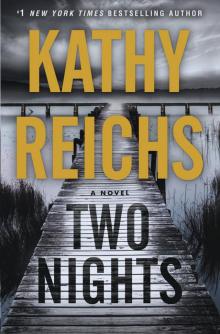 Two Nights
Two Nights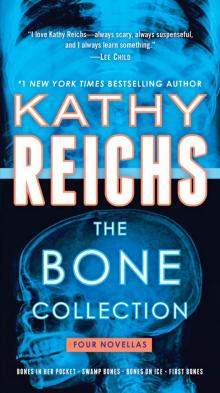 The Bone Collection: Four Novellas
The Bone Collection: Four Novellas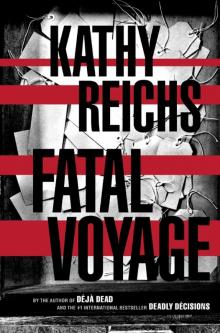 Fatal Voyage
Fatal Voyage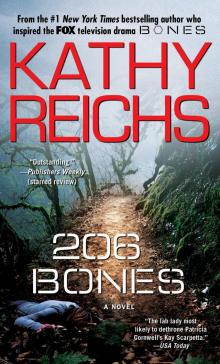 206 Bones
206 Bones Bones to Ashes
Bones to Ashes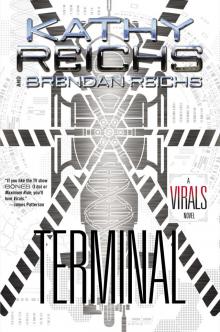 Terminal
Terminal Monday Mourning
Monday Mourning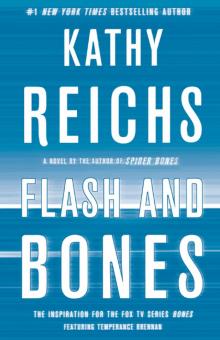 Flash and Bones
Flash and Bones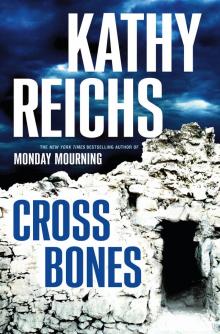 Cross Bones
Cross Bones Devil Bones
Devil Bones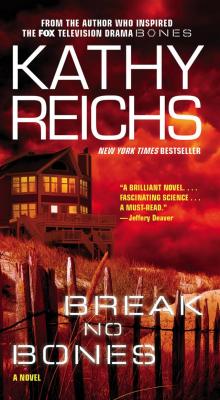 Break No Bones
Break No Bones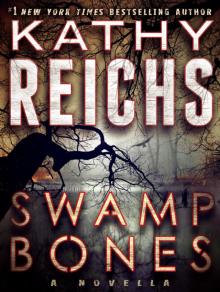 Swamp Bones
Swamp Bones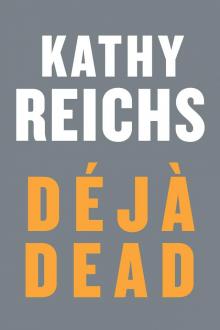 Déjà Dead
Déjà Dead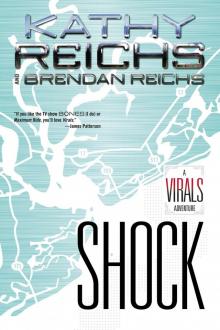 Shock
Shock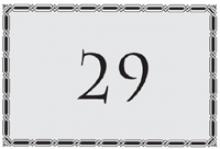 Spider Bones
Spider Bones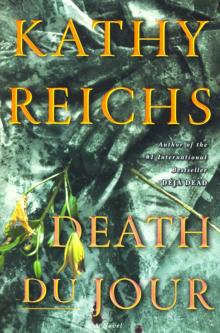 Death Du Jour
Death Du Jour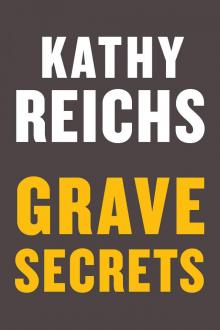 Grave Secrets
Grave Secrets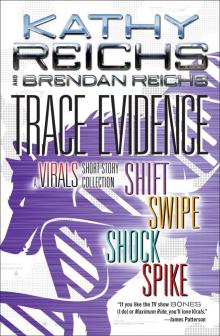 Trace Evidence: A Virals Short Story Collection
Trace Evidence: A Virals Short Story Collection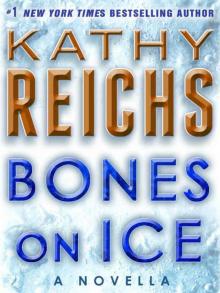 Bones on Ice
Bones on Ice The Bone Code
The Bone Code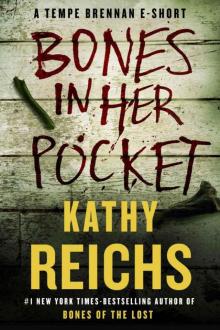 Bones in Her Pocket
Bones in Her Pocket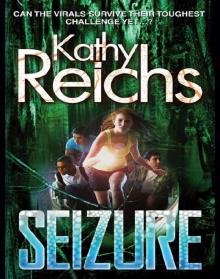 Seizure:
Seizure: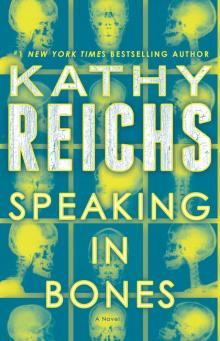 Speaking in Bones
Speaking in Bones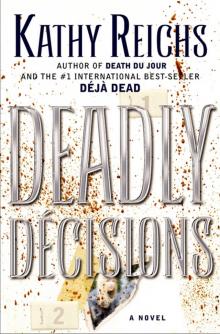 Deadly Decisions
Deadly Decisions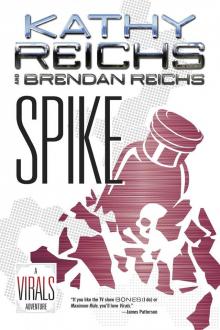 Spike
Spike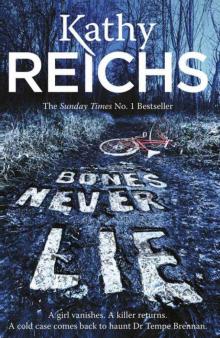 Bones Never Lie
Bones Never Lie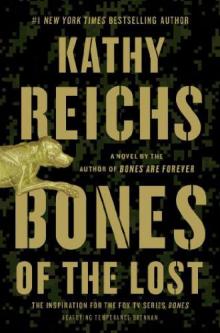 Bones of the Lost
Bones of the Lost Virals 03.5 - Swipe
Virals 03.5 - Swipe Exposure
Exposure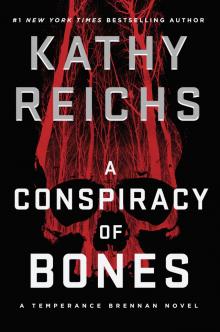 A Conspiracy of Bones
A Conspiracy of Bones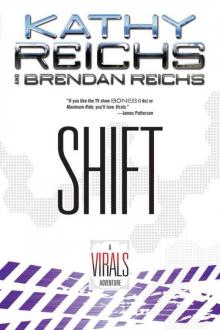 Shift (tory brennan)
Shift (tory brennan)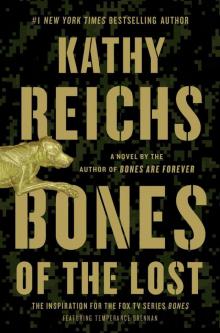 Bones of the Lost: A Temperance Brennan Novel tb-16
Bones of the Lost: A Temperance Brennan Novel tb-16 Virals tb-1
Virals tb-1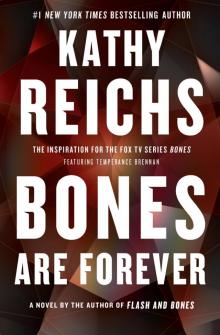 Bones Are Forever tb-15
Bones Are Forever tb-15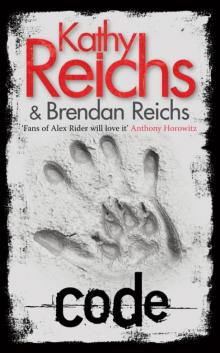 Code tb-3
Code tb-3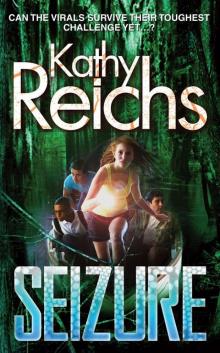 Seizure tb-2
Seizure tb-2 Deadly Descisions
Deadly Descisions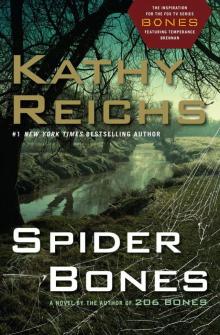 Spider Bones: A Novel
Spider Bones: A Novel